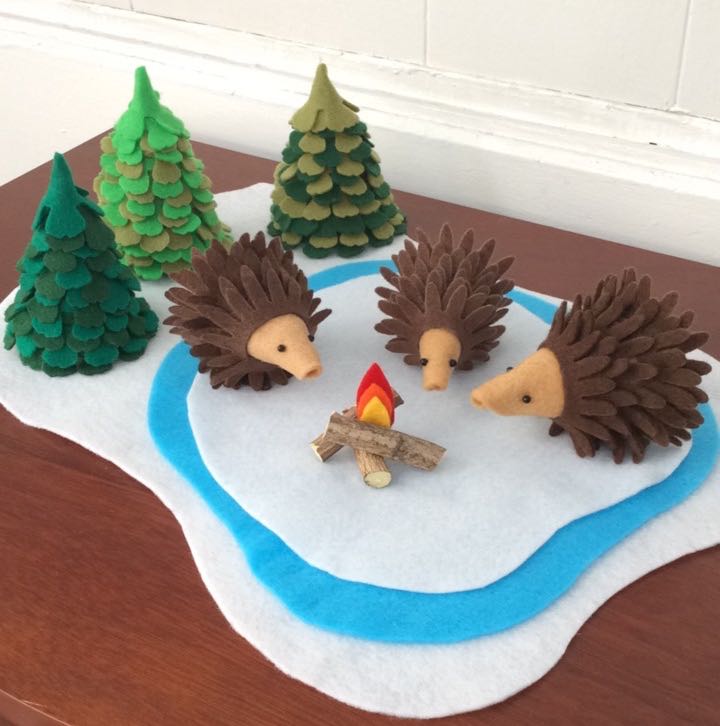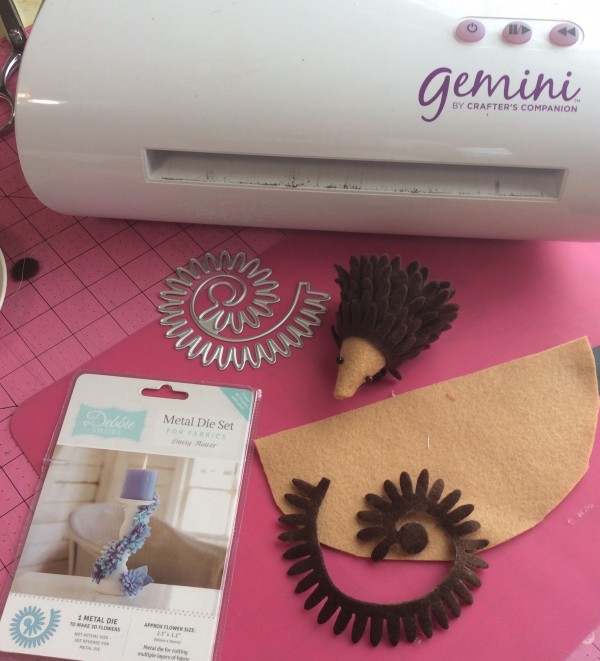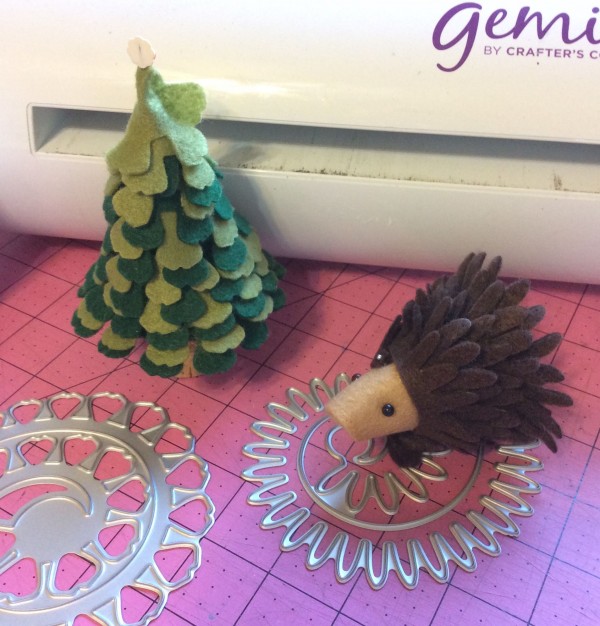
I am always looking for new ways to use my dies as I love die cutting. The new Crafter’s Companion Rose Flower and Daisy Flower dies are perfect for making felt hedgehogs and Christmas trees.

For the base of the hedgehog I simply cut a piece of felt in a half circle and rolled it up in a cone shape.
I hot glued the die cut daisy flower strips onto the cone shape starting from the wide part and coiling them around until there was about 1 inch left.
I sewed two little black beads onto the head area for eyes.

The tree is made the same way only I used two different shades of green felt and the Rose Flower die.
To make the little fire I cut 3 pieces of a branch from my yard and stacked them in a little pile.
The flames are made with red, orange and yellow pieces of felt glued together and on top of the little pile of wood.
All the elements are placed on three layers of felt cut in irregular shapes stacked- white smallest, then light blue, and then a large piece of white felt.
